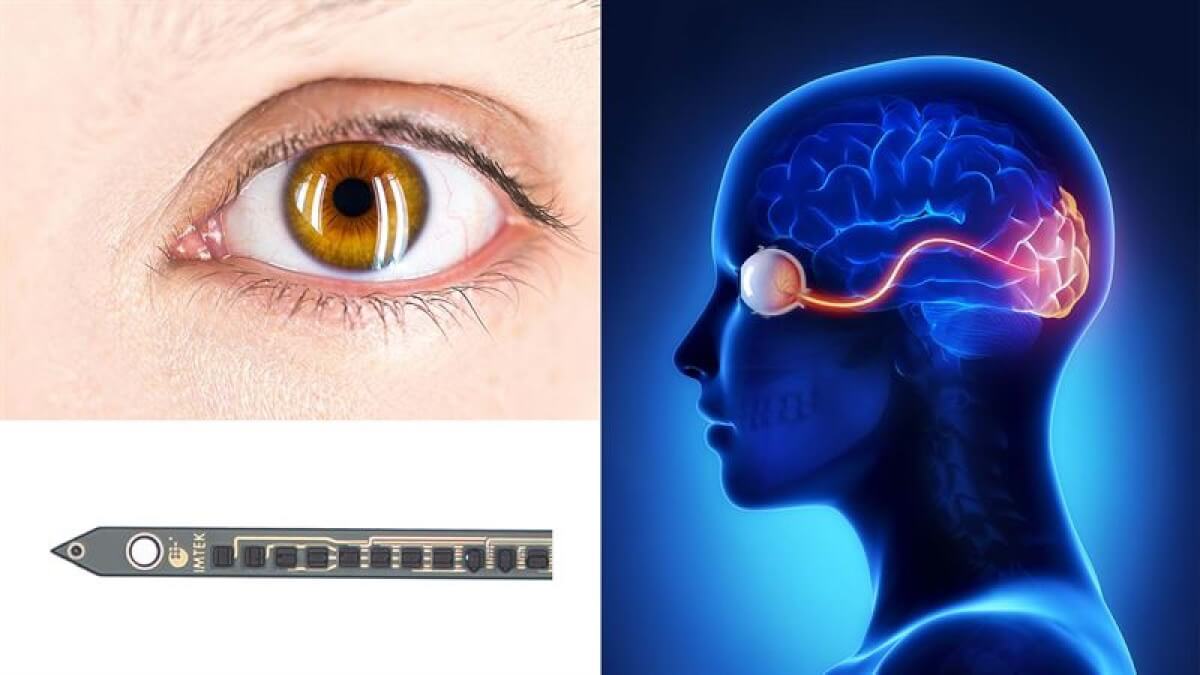GOTHENBURG, Sweden — Revolutionary treatments often start with a small idea — or, in this case, a tiny implant. As part of the effort to cure blindness, a team of European scientists have designed an extremely small eye implant that more effectively converts electrical signals into visual images in the brain.
Blindness is often the result of some part of the eye being damaged. However, this does not affect the visual cortex in the brain. It remains active and awaits messages from the eye about the external world. Unfortunately, they never come.
Inserting a visual implant in people who are blind is not a new concept. However, since its inception in the 1990s, implant technology has dealt with several challenges. An implant requires thousands of electrodes to mimic the electrical signals the eye sends to the brain to generate a visual image. A single electrode represents only one pixel of information. An implant’s bulky size and potential scarring of the brain make it difficult to house electrodes there for long periods of time.
“This image would not be the world as someone with full vision would be able to see it. The image created by electrical impulses would be like the matrix board on a highway, a dark space and some spots that would light up depending on the information you are given. The more electrodes that ‘feed’ into it, the better the image would be,” says Maria Asplund, a professor of Bioelectronics at Chalmers University of Technology in Sweden, in a media release.
According to the study published in Advanced Healthcare Materials, this new vision implant differs from previous implant models since it is as small as a single brain cell. By designing several “threads” of electrodes placed in a row one after another, the researchers can potentially fit thousands of electrodes onto a single implant. The more electrodes fit into the implant, the more detailed the image.

“Miniaturization of vision implant components is essential. Especially the electrodes, as they need to be small enough to be able to resolve stimulation to large numbers of spots in the ‘brain visual areas.’ The main research question for the team was, ‘can we fit that many electrodes on an implant with the materials we have and make it small enough and also effective?’ and the answer from this study was—yes,” explains Asplund.
Another obstacle the researchers overcame with this new vision implant is the rusting of the implant’s materials over time. Electrodes are difficult to maintain for a long time in a humid environment, and metal corrosion in surgical implants can create a whole new set of health problems.
The researchers used a unique mix of non-corroding materials layered together, including a conducting polymer for transforming electrical signals. The polymer creates a protective layer to cover the metal and make it more corrosion-resistant.
Researchers also focused on limiting the amount of metal in the visual implant. The implant is just 40 micrometers wide and 10 micrometers thick — equivalent to the size of a split hair — with the metal parts being a few hundred nanometers in thickness. The reduced amounts of metal in the vision electrode drastically lower the chance of the implant not working.
“We now know it is possible to make electrodes as small as a neuron and keep this electrode effectively working in the brain over very long timespans, which is promising since this has been missing until now. The next step will be to create an implant that can have connections for 1000s of electrodes,” says Asplund.
The study author is currently working on inserting thousands of electrodes for this visual implant in another project called Neuraviper.
The authors used mice to test the effectiveness of this new visual implant. Mice were trained to respond to an electrical impulse in the visual cortex of the brain. After a few sessions, mice learned to react to stimulation from electrodes, and the threshold needed for mice to report a perception was lower than that needed for other metal-based implants. Additionally, the implant remained stable in mice. One implant worked for each mouse until the end of its natural lifespan.
